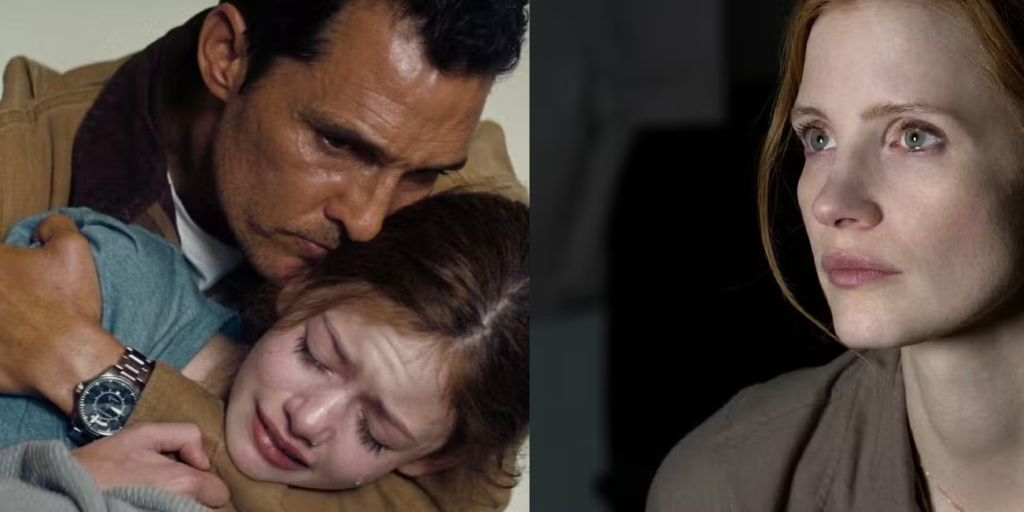Interstellar is a movie that often sparks lively discussions. Whether you enjoy the film or not, there are many intriguing elements—like the science, the visuals, the themes, and the characters. Recently, a new theory suggests that Cooper (Matthew McConaughey) might have been dead throughout the movie.
Christopher Nolan’s films are known for their clarity, but Interstellar may play with the audience’s perception, hinting at a possible twist involving Cooper.
When Does Cooper Die in Interstellar?
In July, TikToker StarkVerse posted a video discussing how Interstellar uses the same shot of Cooper’s Ranger ship in both the opening dream sequence and later as his team approaches Miller’s planet. StarkVerse proposes that Cooper dies in the incident shown in his dream.
The rest of the movie could be Cooper coming to terms with his death. The repetition of the scene might point to his death and the various impossible situations he faces afterward, such as crashing ships and entering a black hole.
The incident that supposedly causes Cooper’s death is unclear. He only describes it as “something tripped my fly-by-wire,” meaning he lost manual control of his ship. He then hits his head and wakes up in his bedroom with his young daughter Murphy (Mackenzie Foy) worried.
According to the theory, Cooper’s death occurs here, and everything that follows happens in his mind. At NASA, Romilly (David Gyasi) mentions a similar gravitational anomaly to one in Murphy’s bedroom.
These anomalies were created by Cooper in the tesseract inside the black hole Gargantua, ensuring he completes his mission and helps adult Murphy (Jessica Chastain) solve the gravity equation to save the world.
The use of repeated footage might seem odd, but Nolan’s careful filmmaking suggests it might be intentional. The repetition could be a subtle hint for viewers to notice these details.
How Cooper Being Dead Changes Interstellar
The theory that Cooper is dead might sound unusual, but it changes how you experience the movie. Interstellar explores the blurred line between life and death and the connection between love and time. The theory fits into these themes. Elements such as lines, names, and situations take on new meanings if you view the movie through this lens.

Murphy often talks about a “ghost” in her bedroom, who communicates by knocking books off shelves and arranging dust. If Cooper is dead, he could be the ghost, interacting from inside the tesseract in Gargantua.
The term “Straits” hints at his fate since a strait is a narrow passage between two larger areas, suggesting Cooper is in a space between life and death. The mission, named Lazarus, references a biblical figure who returns to life. Cooper’s mission might be his way of coping with leaving Earth and transitioning to another form of existence.
Throughout the film, there are references to death. For example, the crew calls hibernation “the big sleep,” a common metaphor for death. Before flying into Gargantua, TARS (Bill Irwin) says, “See you on the other side,” another death metaphor.
Cooper’s encounter with Dr. Mann (Matt Damon) on an icy planet includes a remark about seeing one’s children before death. Murphy is the first thing Cooper sees after waking from a nightmare, suggesting he is holding on for her.
When he jumps into Gargantua, Murphy’s bedroom is recreated in the tesseract, representing his greatest regret. Cooper also watches video messages from his children, showing his attempt to hold on for their sake. The tesseract symbolizes his final transition to the afterlife.
After his tesseract journey, Cooper is rescued and wakes up on Cooper Station, a peaceful version of Earth life. Elderly Murphy (Ellen Burstyn) is on her deathbed after solving the gravity problem. Cooper visits her, and although only a few acknowledge him, they do not recognize him.
According to the theory, Cooper is there to welcome his daughter to the afterlife. He later sets off into the unknown with TARS on their smaller ship, finally at peace.
The Theory and Interstellar’s Main Themes
While the idea of Cooper being dead might seem far-fetched, it fits with the movie’s main themes. The film suggests that love is a dimension that spans time and space. This idea aligns with Cooper reaching out to Murphy from beyond the grave.
The theory might seem to remove the film’s mystery, but it also reinterprets Cooper’s journey as a personal exploration of loss, separation, inevitability, and letting go.
It turns the movie into a metaphorical examination of death, making Interstellar not just a sci-fi story but also a reflection on love and loss. This interpretation adds emotional depth to the narrative.






